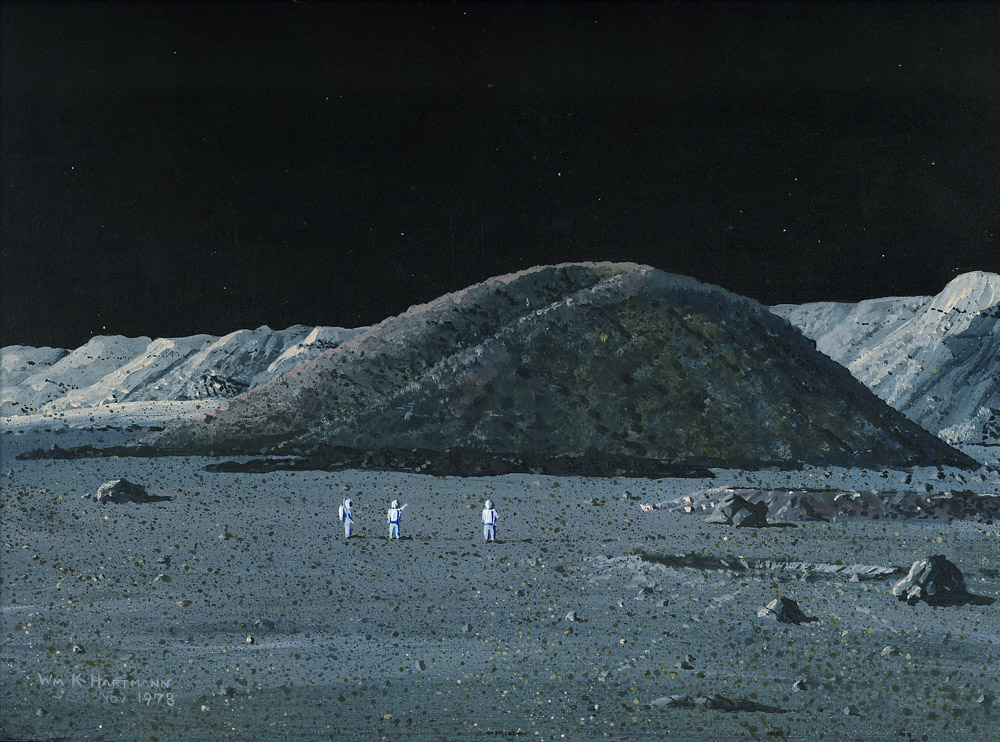Difference between revisions of "January 16, 2010"
(Created page with "__NOTOC__ =The Best Way To Solve Geologic Problems= <!-- ws:start:WikiTextHeadingRule:1:<h1> --> <!-- ws:start:WikiTextLocalImageRule:16:<img src="/file/view...") |
(No difference)
|
Revision as of 16:38, 1 January 2015
The Best Way To Solve Geologic Problems
painting by Bill Hartmann, 1978
Copernicus is probably the most commonly studied and observed crater on the Moon but few people are aware that something is wrong with it. It should be pristine because it is a young crater - only about a billion years old - and there is very little damage from subsequent impacts. The problem is that Copernicus is only 3.8 km deep, yet based on the depth-diameter ratio of fresh craters, its 93 km width implies it should be 4.4 km deep. So Copernicus is about 600 m too shallow. We can use a second relation between central peak height and crater diameter to provide another check on how deep Copernicus should be. Based on its diameter, the central peaks should be 2 km tall, but they are only 1 km. So these two relationships suggest that the floor is too shallow by 600 to 1000 m. Why? There is impact melt on the floor of Copernicus and that has shallowed it somewhat, but statistical relations between crater diameter and thickness of melt suggest the floor should be veneered by only about 250 m; the floor is still shallower than expected. This painting by my friend Bill Hartmann suggest another possible explanation. At least Chuck Wood
Related Links
Rükl plate 31
Bill Hartmann's Painting Gallery
COMMENTS?
Click on this icon File:PostIcon.jpg at the upper right to post a comment.




